Welcome to South America
What comes to mind when you think of South America? If you said “the Amazon” and “some ruins”, we need to chat. A visit to South America will make you feel like you’re on top of the world, figuratively and literally. With the Amazon to the east, the Andes to the west, and the glaciers of Patagonia, there’s an astounding amount of natural beauty, but South America isn’t just known for being pretty. The alluring tango of indigenous cultures and western influences give South American cities a flavor all their own which you will see in the music, art, architecture, and food scenes. If you know enough Spanish to get by, much of the continent is within your grasp (brush up on your Portuguese if your fly-by includes Brazil), so break out your phrasebook and let’s go!
Must see countries in South America quick links: Argentina | Bolivia | Brazil | Chile | Colombia | Ecuador | Peru
Argentina
Buenos Aires

You know the part in Evita where Eva Perón gets of the train in Buenos Aires and she instantly falls in love with the city and starts spinning around? It’s like that. Heavily influenced by the Spanish, Italians, and French, Buenos Aires is now a multicultural powerhouse that attracts people from across the globe. Carnivores will delight in the food scene here, known for its steakhouses, so come hungry, but don’t stuff yourself to the point where you can’t enjoy some helado! You can dance off the calories later by learning to tango, arguably Argentina’s most well-known contribution to the world, or simply catch a tango show if you have two left feet. There’s plenty to do in Buenos Aires, from catching a fútbol game, to visiting one of the many museums to ogling at the architecture. The city has a subway system as well as busses and taxis that can get you on your way to exploring life along the Río de la Plata.
Iguazu Falls
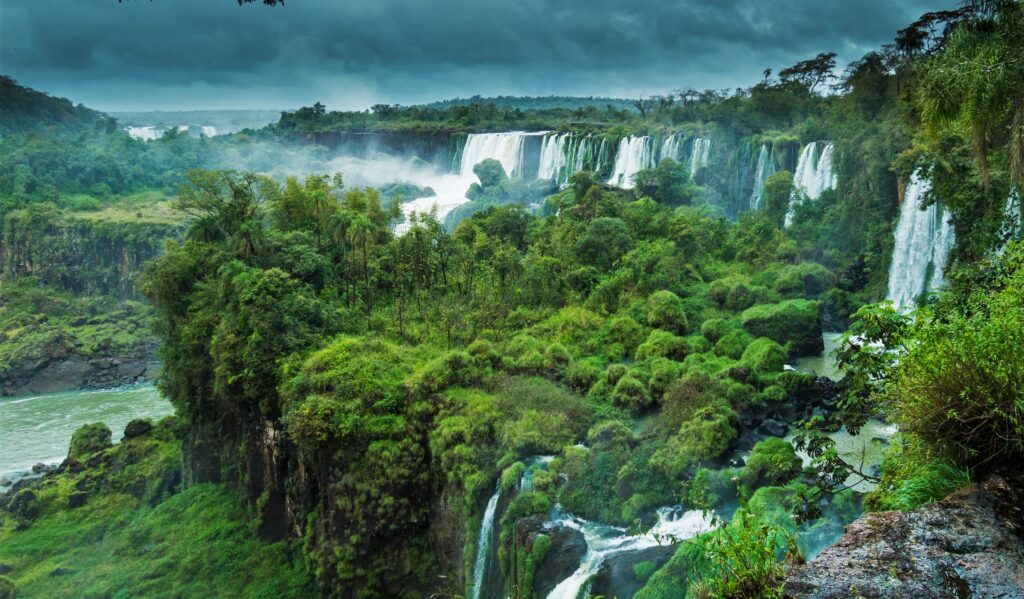
The Iguazu River is a major dividing line in South America, separating the countries of Argentina, Paraguay and Brazil. Along Argentina’s border with Brazil, you’ll find Iguazu Falls which, when all 275 falls are combined, comprise the largest waterfall in the world, clinching its title of one of the seven natural wonders of the world. The largest and grandest of all the individual falls is Devil’s Throat, right on the Brazillian border. In spite of its somewhat remote location in Argentina, the area is served by the Cataratas del Iguazu International Airport, but if the price of the flight makes you clutch your pearls, consider taking a significantly cheaper overnight bus from Buenos Aires to Puerto Igauzu.
San Carlos de Bariloche
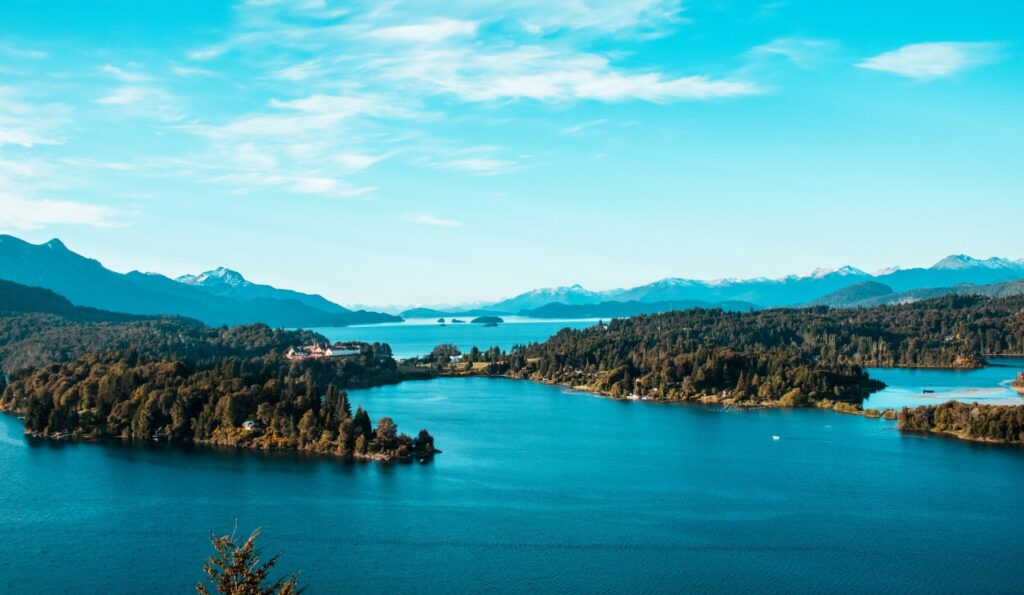
Bariloche is a city in Argentine Patagonia where the Andes meet the Alps. Its chalet-style architecture arrived with German-speaking immigrants in the early 1900s which looks picture-perfect alongside the Andean foothills and Nahuel Huapi Lake. Aside from your typical winter resort activities, you can hop on a chairlift to see the Cerro Cathedral and Nahuel Huapi in all its glory, explore a number of hiking trails in the area, or simply wander through town. Bariloche is the chocolate capital of Argentina, so don’t leave without trying some! Winter is the peak season around here, so if you’re eager to avoid tourists living their South American Alpine fantasy, we recommend avoiding June through August. Whenever you decide to go, it’s just a two-hour flight from Buenos Aires.
Bolivia
La Paz

If you’re looking for a great bang-for-your-buck destination, look no further than Bolivia’s capital, La Paz. It might not have a sterling reputation, if you like a good time, you could very well spend the wildest nights of your South American fly-by in La Paz. The city is somewhat of a hidden gem when it comes to cuisine and nightlife. Being caught in between the Amazon and the Andes, there’s natural beauty in the area too if you find yourself needing to dry out a little. If you’re feeling like a daredevil, you might be interested in driving or biking the scenic “Death Road”, though keep in mind that the road has lived up to its name on multiple occasions. Taxis and local busses can get you where you want to go, but why not take a ride on the Teleferico, the highest cable car system in the world? Speaking of being high up, at over 4,000m above sea level, getting altitude sickness is very much a thing here, so make sure you allow your body to adjust to the Andes.
Laguna Verde
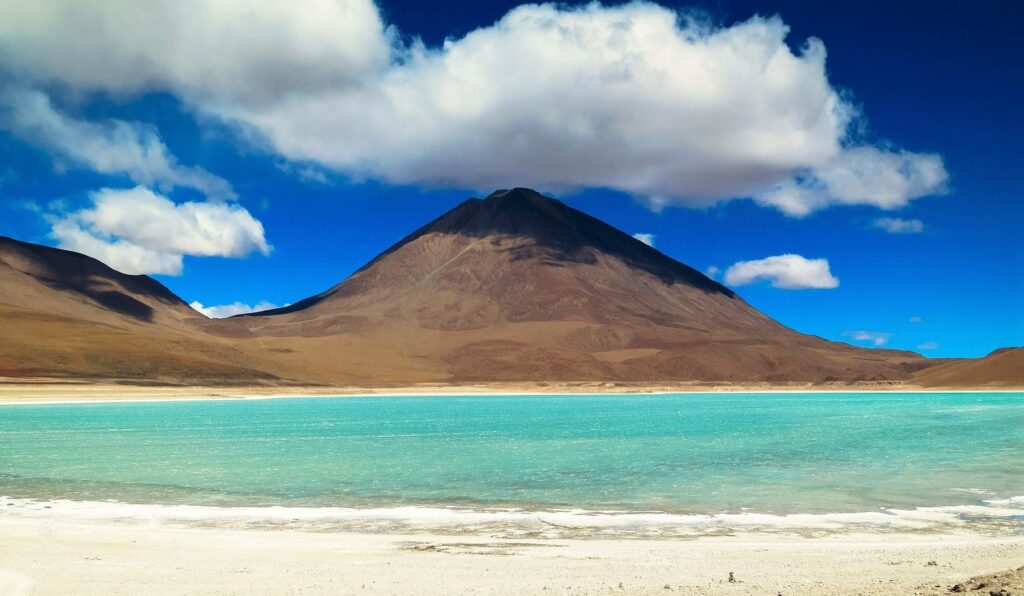
At Bolivia’s southern border with Chile at the foot of a volcano, you’ll find a gorgeous emerald lagoon, or Laguna Verde. The striking green waters are the result of a number of minerals found in the water, including arsenic, making this a look-but-don’t-touch kind of lake. It’s relatively close to Salar de Uyuni, so if you’ll already be there, it’s pretty simple to add Laguna Verde to your fly-by if you book a tour.
Salar de Uyuni
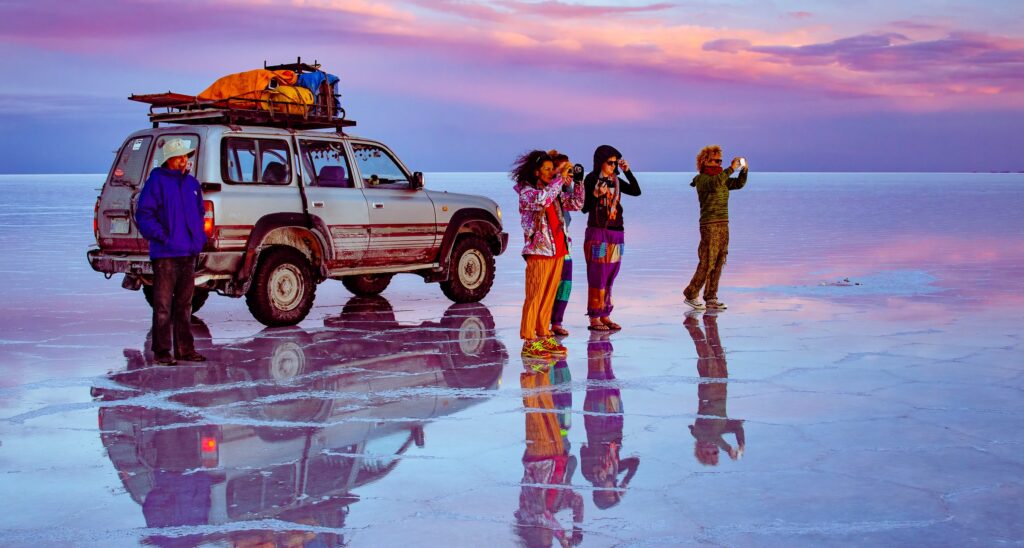
At 10,852 sq. km., Salar de Uyuni is the largest salt flat in the world. Once home to a prehistoric lake, only the thinnest layer of water covers the salt flats seasonally, turning the Salar de Uyuni into an enormous mirror, not to mention a once-in-a-lifetime photo op. There’s so much salt here (and so little of anything else) that even a local hotel was built out of salt! There’s also a train cemetery near the town of Uyuni, displaying remnants of the Bolivian mining industry that’s worth checking out while you’re there. Salar de Uyuni is very much in the middle of nowhere; the fastest way to get there is to fly, but if you’re more interested in saving your pennies than comfort, you can also take a train or a bus there.
Brazil
Amazon Rainforest
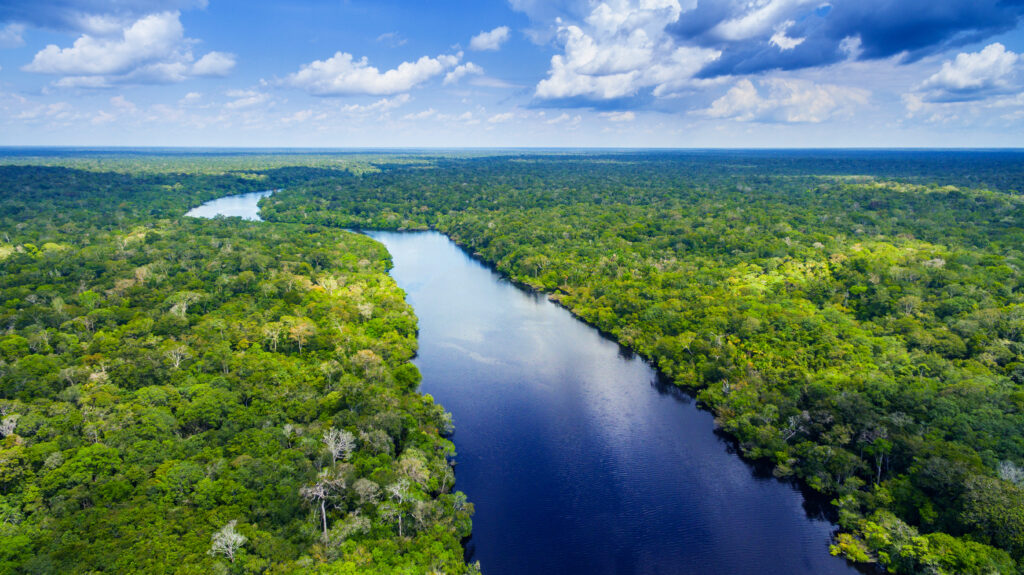
The Amazon Rainforest is the largest rainforest on earth spanning nine countries, but most of it resides in Brazil. The Amazon is home to a staggering 10% of the world’s biodiversity, so you will have a chance to channel your inner botanist or zoologist. Manaus is a typical starting point for those venturing into the rainforest. Given how enormous it is, the Amazon is best explored with a river cruise or a guided walk through the jungle. As far as accommodations go, there are lodgings in the jungle that can provide a reasonably comfortable stay. Remember: the Amazon is a fragile ecosystem that our planet depends on, so always remember to follow the principles of Leave No Trace to help protect it.
Fortaleza
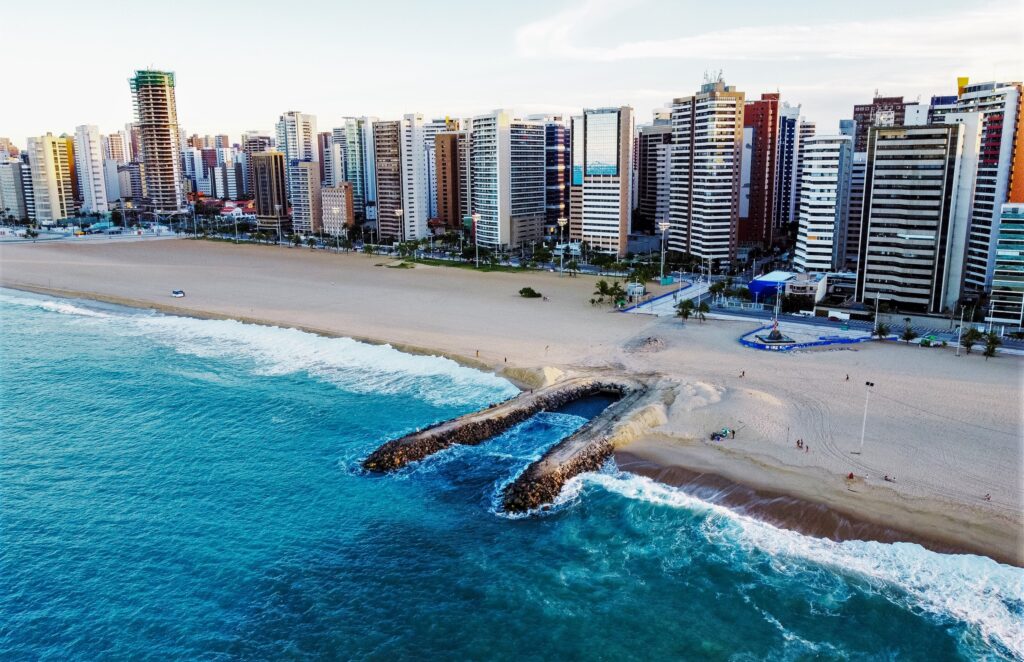
Fortaleza is the largest city in northern Brazil and the fourth largest in the country. A stroll through Biera Mar will provide plenty to do, offering sea views to the north as you wander past restaurants and markets. Walking toward the city’s historical center, you will be sure to notice the colorful facades of buildings within the Dragão do Mar Center of Art and Culture. Here, you’ll find a theater, a library, a movie theater, and a planetarium as well as a couple museums. When you’ve had your fill of the beach and Dragão do Mar, there are plenty of places to eat around the city center and opportunities to experience Fortaleza’s nightlife. You can fly into Fortaleza directly and use the subway and bus system to explore the city.
Lençóis Maranhenses National Park

Rainforests always come to mind when we think of Brazil, but sand dunes? Not so much. You’ll actually find some of the coolest sand dunes around in Lençóis Maranhenses National Park. Their unique draw is that during the rainy season, the dunes’ valleys fill up with water, creating little lagoons. Once you’re in the park, there are ample opportunities to explore whether it’s on horseback, by ATV, on a bike, in a canoe or on foot. It’s also a great place to view the southern hemisphere’s night sky for all you amateur astronomers. To see the dunes in their full glory, you will need to schedule your fly-by between June and September, once the lagoons have formed from the rainfall. To get to the park, fly to São Luis, then either hire a car or take a bus to Barreirinhas.
Rio De Janeiro
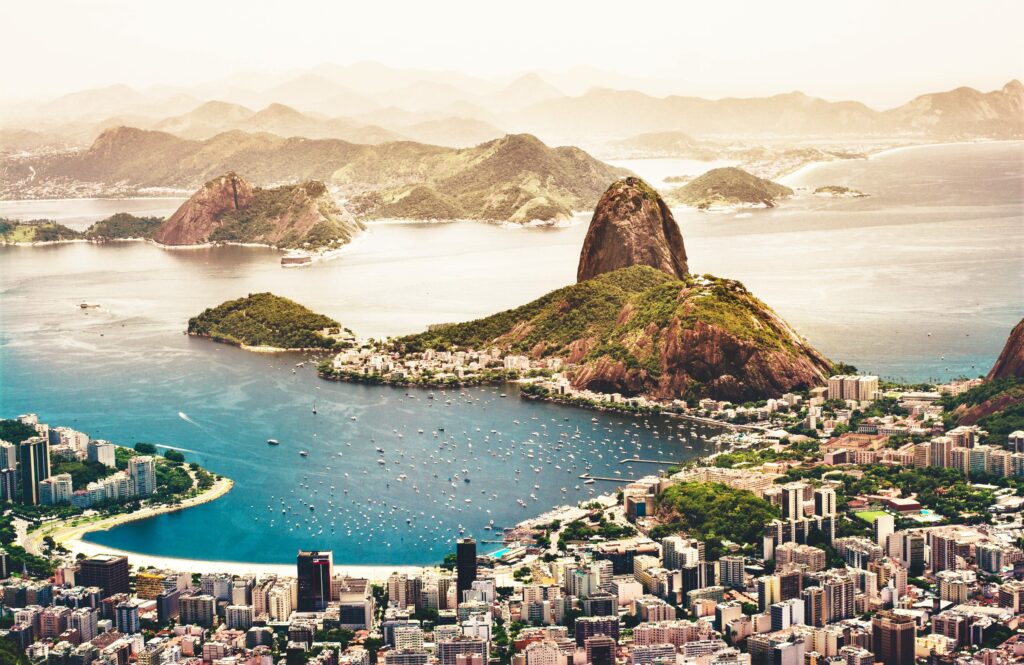
Beneath Corcovado and the iconic Christ the Redeemer statue, woven through worn, coastal mountains is Rio de Janeiro, a city bursting at the seams with all it has to offer. Spending time at one of Rio’s beaches is absolutely non-negotiable, so come prepared to channel your inner-Girl from Ipanema. Sugarloaf Mountain is another popular attraction viewable from every corner of the city, though you can take a cable car up the mountain for an outstanding view of the city. There’s simply too many other opportunities to explore the art, music, nightlife, sporting events, museums, and other cultural opportunities here, but whenever you samba on down to Rio, you’re sure to find what you’re looking for. Getting around the city is easy using its metro system which is further supplemented by light rail and busses.
São Paulo
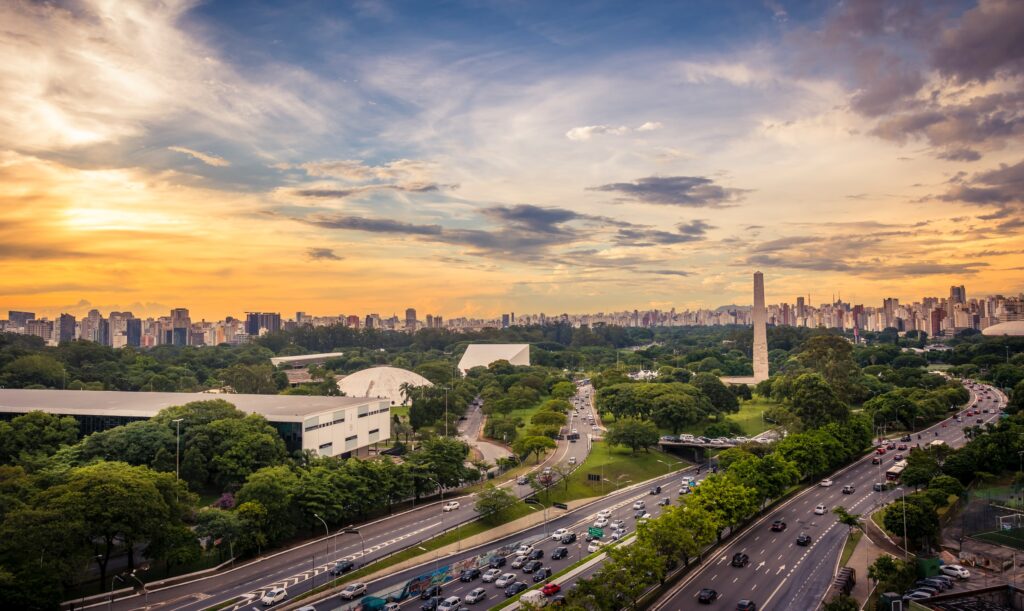
Originally one of the poorest parts of a Portuguese colony, São Paulo has experienced incredible growth in the last 400 years, now one of the largest cities in the world and Brazil’s economic engine. Being an alpha-global city, it’s home to folks from over 200 countries, though Portuguese and Italian influence are most prevalent. The city is known for being especially LGBT friendly and their pride parade is one of the biggest and best in the world. There are an indescribable number of things to see and do in São Paulo, though the main attractions include the São Paulo Museum of Art, Ibirapuera Park, the Sé cathedral, and walking along the Avenida Paulista. To get around this massive city, take one of the express busses or the Metrô and avoid driving at all costs–the traffic is no joke here.
Chile
Atacama Desert
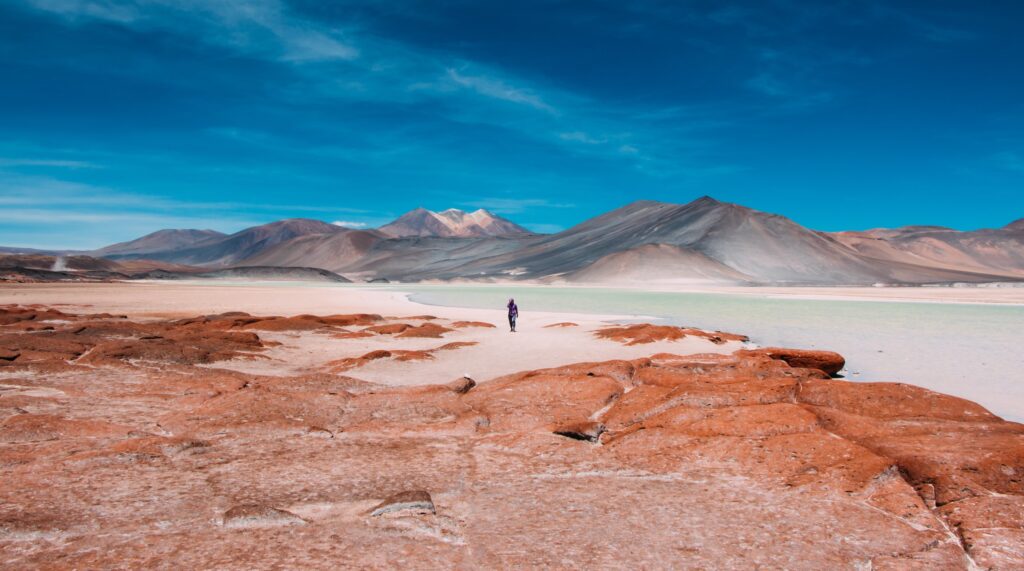
The Atacama Desert consumes the northern third of Chile is one of the most arid places on Earth. The terrain here is so barren in some places, it’s been used as a filming location to represent Mars. Not only is the Atacama great at representing space, but it’s excellent for observing it too! Due to its clear skies and lack of light pollution, the Atacama Desert is a great place to stargaze, which you can do on your own or at a tourist observatory, like Mamalluca Observatory, just outside of Vicuña. In addition to stars, you’ll find salt–salt flats, that is. Places like the Salar de Talar offer out-of-this-world sights with dark skies perfect for seeing the Milky Way with astounding clarity. Rent yourself a car and the Atacama, wherever and however you decide to explore it, is yours!
Patagonia
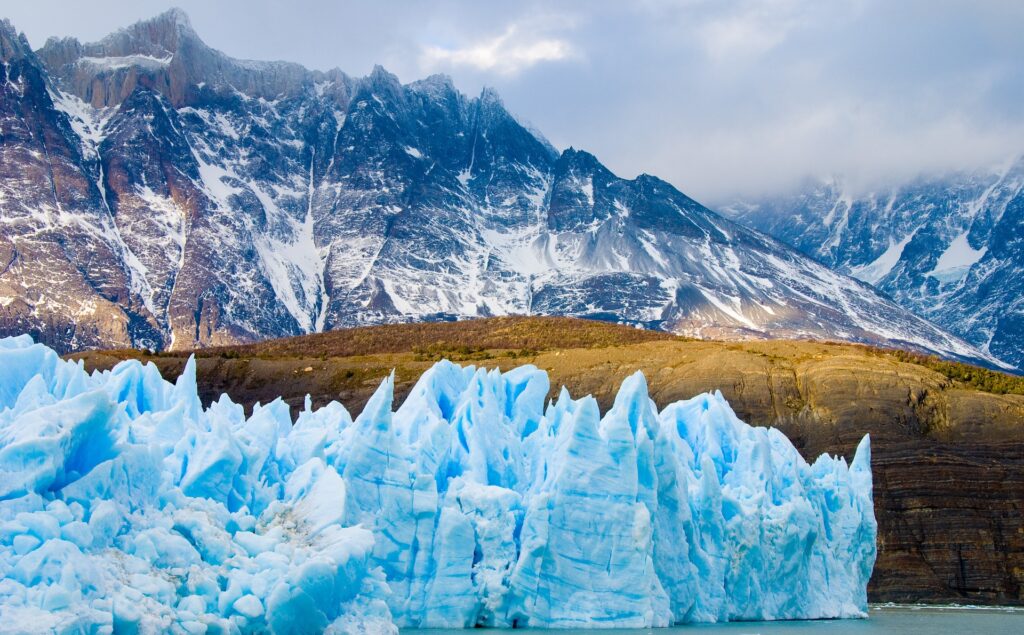
Take your fly-by to the ends of the earth in Patagonia. This region including southern Chile and Argentina is shaped by the southern reaches of the Andes. The Chilean side is characterized by its glacial fjords and cool rainforests, while on the Argentine side, you will find grasslands and desert created by the Andes’ rain shadow. Rent a car to experience the unimaginable beauty of the Patagonia Park Route, which takes visitors through a whopping 17 national parks over 1,700 miles and six different ecosystems. Towns along the route are somewhat far apart and small, but if you would like to visit a town of some size, you might consider walking among the colorful buildings in Castro, or gaze out at the Southern Ocean in Punta Arenas.
Rapa Nui
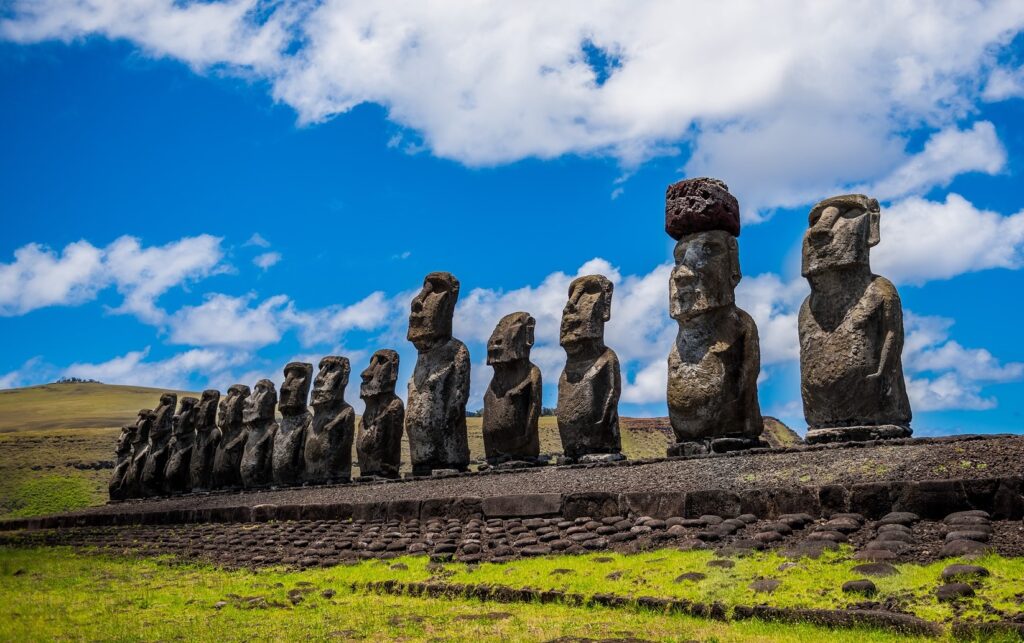
Rapa Nui, otherwise known as Easter Island, marks the easternmost Polynesian settlement. The island’s inhabitants carved the massive moai or the large, stone figures found mostly along the island’s coast sometime between 1100 and 1600 CE, many of which are still in decent shape. For the best display of Rapa Nui culture, try to go in February when the Tapati Rapa Nui festival takes place. To get to Rapa Nui, flying from Santiago is pretty much your only option and that flight is deceptively long, so prepare for a potentially long and bumpy flight. Before you get here, be sure to brush up on your Spanish as few inhabitants here speak English.
Torres del Paine National Park
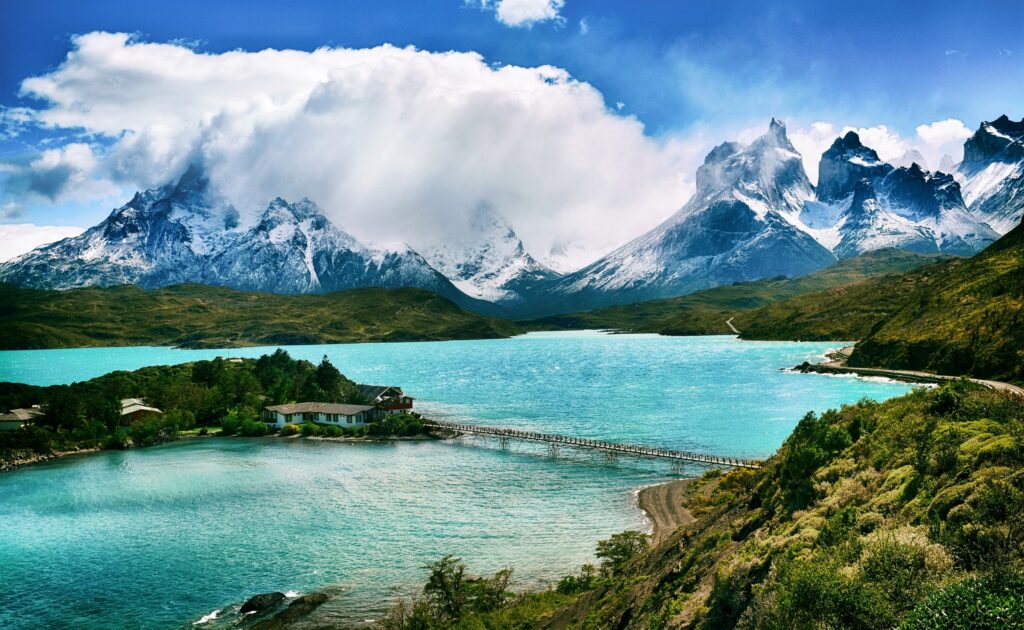
Torres del Paine National Park in southern Chile has some of the most beautiful scenery Patagonia has to offer. There are two main attractions in the park. The Cuernos del Paine, or Paine Horns, are a collection of uniquely shaped granite peaks shaped by millennia of erosion and glacial activity. The Mirador Los Cuernos is the best place to see the Horns and is a reasonable hike from the Lago Pehoé bus stop, suitable for novice hikers. The Cordillera Paine are the torres, or towers, the park is named after. Seeing the towers is a longer hike, around 8-9 hours, but the view at the Mirador Las Torres is unforgettable. If you’re a seasoned hiker, you might want to venture out on the W Trek, a 5-6-day hike with views of the parks most notable features. To get to the park, you can fly from Chile’s capital Santiago down to Punta Arenas, then bus it over to the park.
Colombia
Bogotá
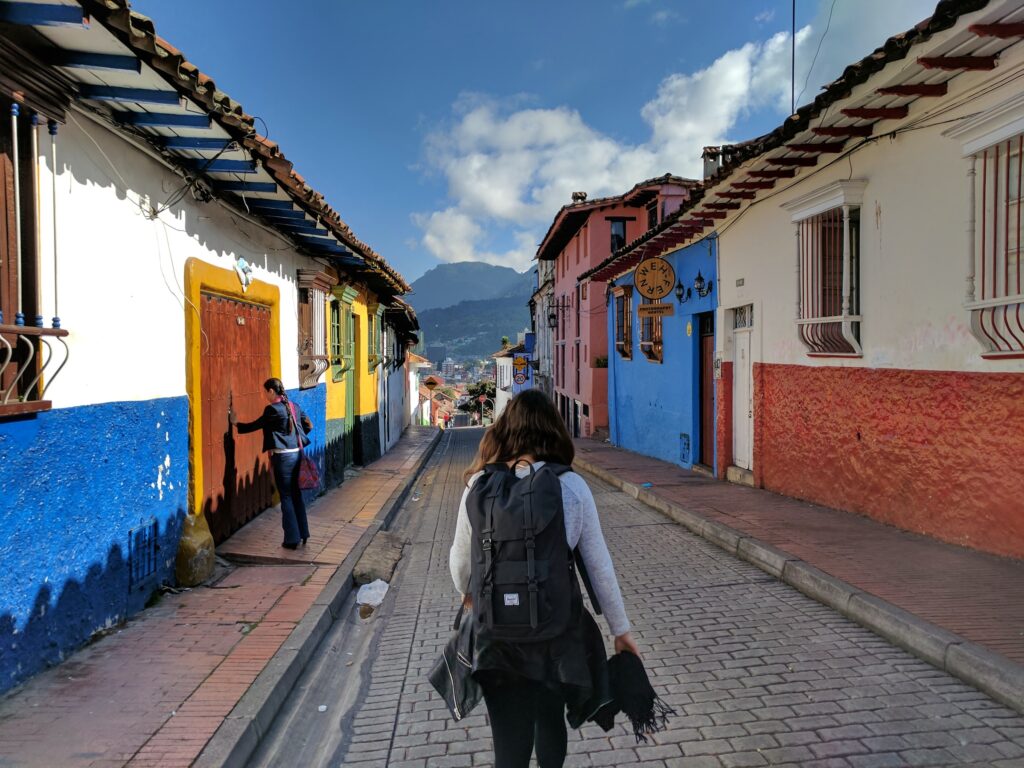
High on the Cundiboyacense Plateau in the heart of Colombia, you’ll find its capital city, Bogotá. In stark contrast to Medellín which actively appeals to an international crowd, Bogotá remains distinctly Colombian; it’s not a vibe for everyone, but this no-frills city has a lot to offer. The city center, La Candelaría, isa cultural epicenter, containing the Gold Museum, the Botero Museum, and the National Shrine of Our Lady of Carmen. If you’re looking for a bite to eat, Bogotá’s lunch scene is where it’s at with numerous options for a cheap, tasty, and filling meal. If La Candelaría is becoming a little too familiar, take the TransMilenio bus over to La Macarena for more attractions like the National Museum and more awesome food.
El Totumo
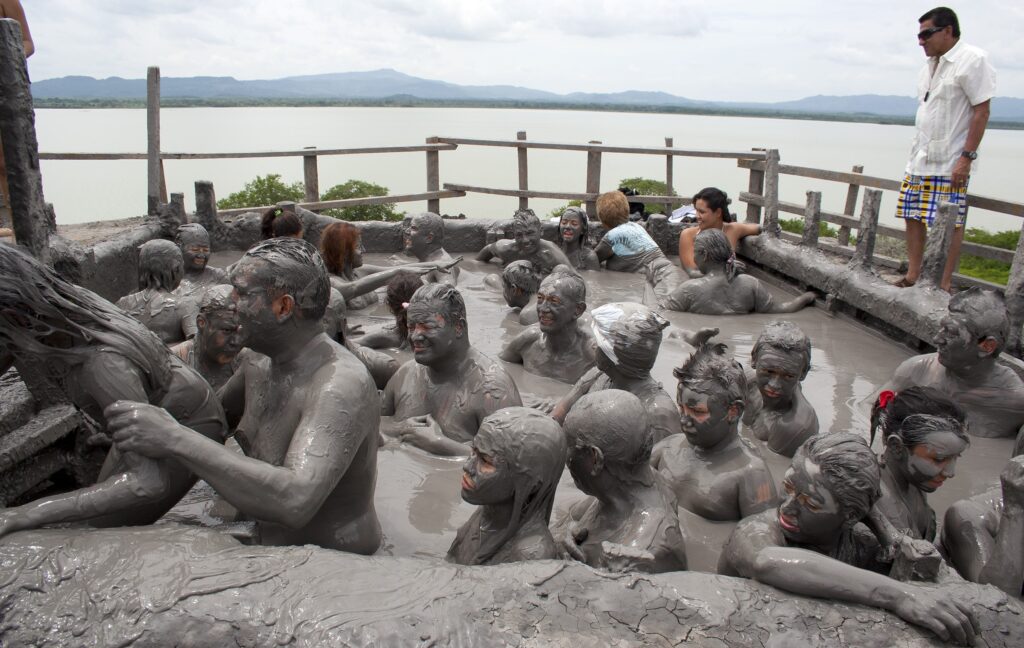
Get messy on your fly-by with a trip to El Totumo, found on Colombia’s northern coast between Barranquilla and Cartegena. El Totumo is a mud volcano, and while it can be scaled with a staircase, its wonders come not from its size, but from the mud. Tourists come from all around to bathe in it, hoping to benefit from its alleged healing properties. When you’re done with your mud bath, you’ll hop in the nearby lagoon to rinse off with the aid of the locals, so if you’re the modest-type, you may want to consider whether this destination is right for you.
Medellin
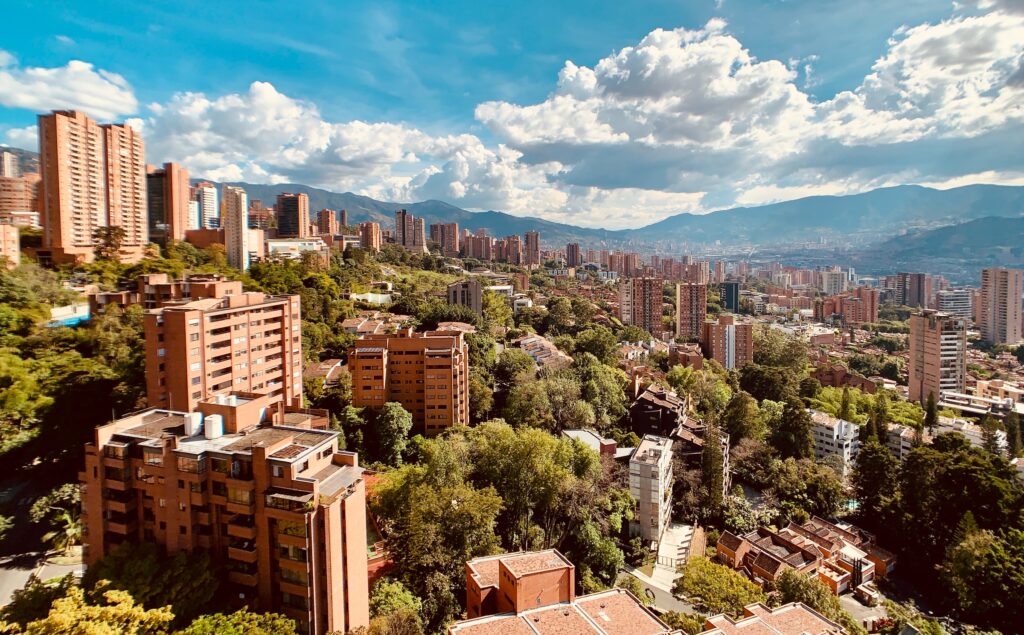
While much of South America finds itself recovering from its past, Medellin aims to brand itself the city of the future. The city is well-known as the home of famed drug kingpin Pablo Escobar and has consequently gotten a bad rap, but it’s not the 80s anymore and the city is much safer these days. Medellin has a lot to offer for wanderers, from plazas full of art surrounded by colonial architecture to its lush greenspaces. Being a city of the world, Medellin has a great food and drink scene, plenty of museums, and nightlife. The city boasts one of the best public transportation systems on the continent featuring not only busses and metros, but also trams, a cable car system, and a massive outdoor escalator. A word to the wise: skip the Escobar tour–locals are far from fans of his. Rather, enjoy what the people of Medellin have worked so hard to build for themselves.
San Gil
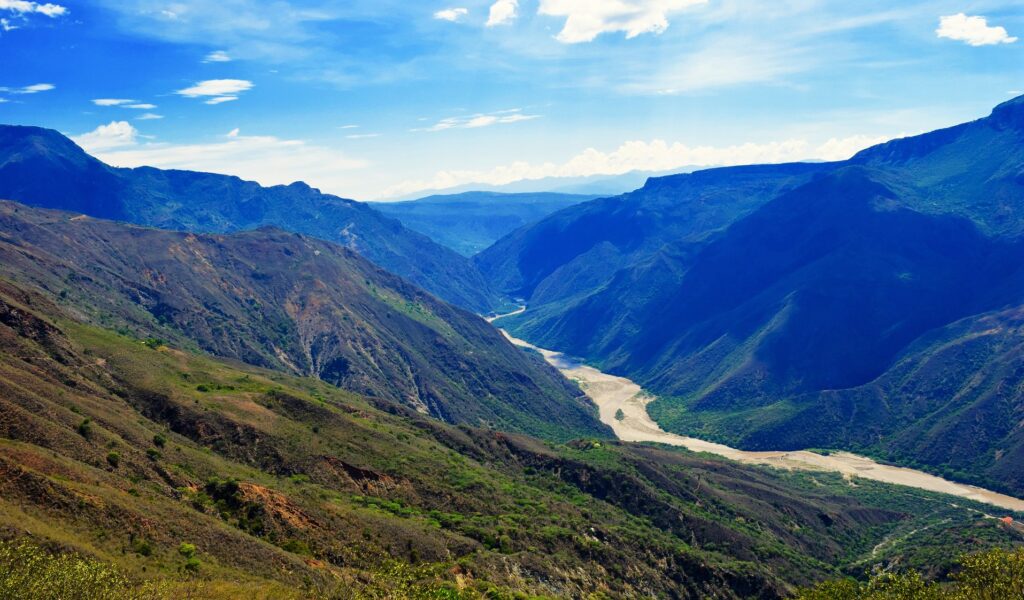
Adventurers won’t want to sleep on San Gil! This small town is known as Colombia’s adventure capital, there are ample opportunities for high adventure, including rafting, paragliding, caving, and more. If you’ve had enough of thrill-seeking, there are some other places you can poke around, like El Gallineral Park and do a little birdwatching along the Rio Fonce or visit the waterfalls outside of town. You can also use San Gil as a base for exploring Chicamocha National Park to the north, home of the second-deepest canyons in the world (say hi to the goats and ostriches while you’re there). Getting to San Gil is time-consuming, with bus rides clocking in upwards of 7 hours from major cities, but it’s sure to treat your sense of adventure when you finally arrive!
Tayrona National Park
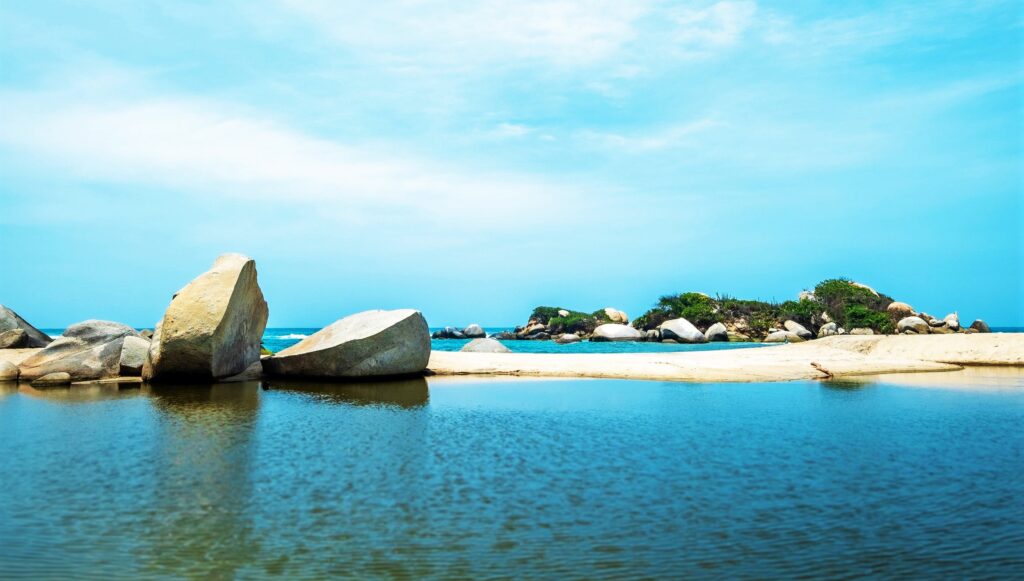
If your Colombian fly-by includes a beach day, Tayrona National Park is where it’s at. Situated on Colombia’s Caribbean coast, Tayrona National Park is home to gorgeous sandy beaches, lush rainforests, and abundant wildlife, which can all be accessed through the park’s trail system. The park’s beauty hasn’t gone unnoticed, so expect it to be busy any time of year, but especially in December and January. The park also closes in February to allow the local flora and fauna a little break before being bombarded by tourists again, so plan accordingly. The closest major city to the park is Barranquilla, from which you can take a bus or taxi to Santa Marta, then bus into the park from there.
Ecuador
Baños

If you ever took an elementary Spanish class, you’ll know that baño means “bath”. The town is named for the thermal baths you’ll find in the area amidst lush rainforest and There are many opportunities for the extreme in the Baños area including white-water rafting, zip-lining, and cliff jumping. However, if extreme swinging is the maximum extent of your thrill-seeking, we have good news for you; check out the “Swing at the End of the World” south of town at La Casa del Arbol. When you’re not out and about in nature, you can wander the streets in search of artisan goods, snag some street food, or even get pampered at a local spa. If this adventure-filled destination is a part of your South American fly-by, you’ll be bussing in, likely from either Quito or Guayaquil, which will take you 3½ and 5½ hours, respectively.
Galápagos Islands
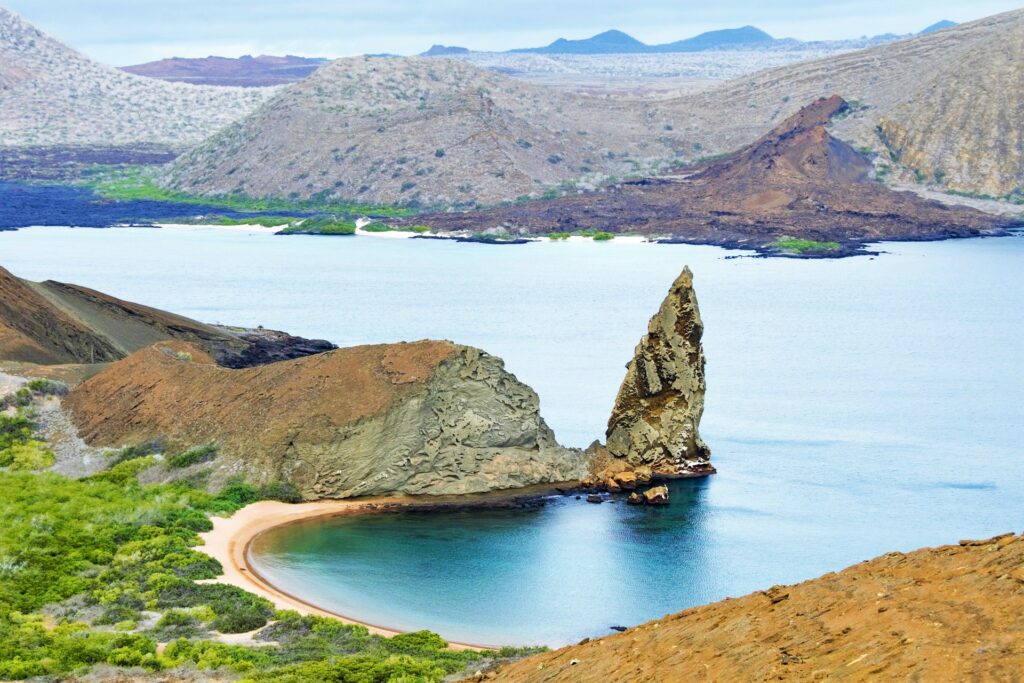
The Galápagos Islands are a must-see for wildlife lovers. This chain of volcanic islands is known for its extraordinary number of endemic species, meaning you won’t find many of the species here anywhere else in the world. Flights to the islands leave daily from Quito and Guayaquil, so you shouldn’t have a tough time finding your way there. The islands can be explored by land or by sea; your choice should depend on how many of the islands you care to see, the cost, and whether or not you get seasick. Regardless, you will need to book a tour for your time there, since tourists can’t explore the islands without one. Most tours will take you to either the Charles Darwin Research Center or the Galápagos Interpretation Center to see the giant tortoises; of course, there are so many other things to see, but let’s be real, you want to see those tortoises!
Peru
Colca Canyon
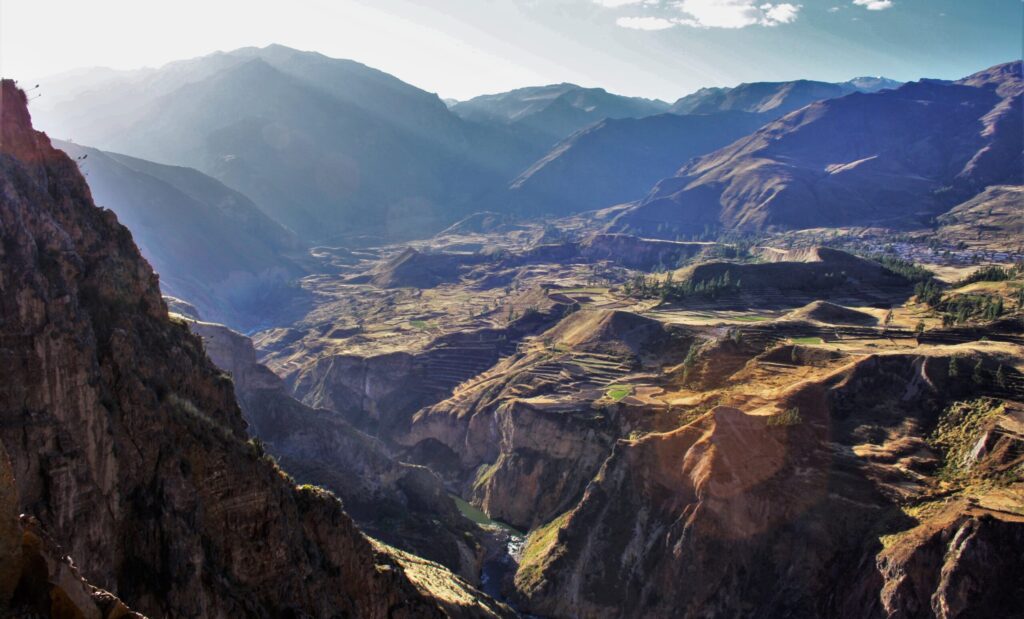
In southern Peru, you’ll find Colca Canyon, one of the world’s deepest canyons at a maximum depth of 3,270 meters. While you’re here, you might catch a glimpse of some of the local wildlife including the biggest species of hummingbird or the culturally important Andean condor, or even some Incan tombs. There are a few tourist towns around the canyon, like Chivay. Here, you can purchase locally made crafts and enjoy the La Calera hot springs. When you’re at the canyon, you can go to the Cruz del Condor observation deck and see the birds locals call the “eternity bird”. Setting out from Arequipa, you can visit Colca Canyon in a day, albeit a very long one, via a bus to Coporaque, then get on a shuttle bus to get to the canyon (make sure you book in advance).
Cusco

Cusco is a popular tourist destination in Peru due to its relative proximity to many Incan ruins including the most famous of them all, Machu Picchu. There are a number of day trips you can take in the Sacred Valley from Cusco, like the Pisac ruins or Lake Humantay. For your inevitable trip to Machu Picchu, you do have the option of taking public transportation there if you’re not the world’s best hiker. On your train ride there, you can stop to catch the ruins in Ollantaytambo before continuing on to Aguas Calientes and hopping a bus the rest of the way to Machu Picchu. If you do feel like hitting the trails, there are plenty of opportunities in the area ranging from a matter of minutes to days (be sure to check if special tickets are needed before you go). Remember: Cusco is very high up–be kind to your body when you get there and allow yourself to get used to the altitude!
Ica
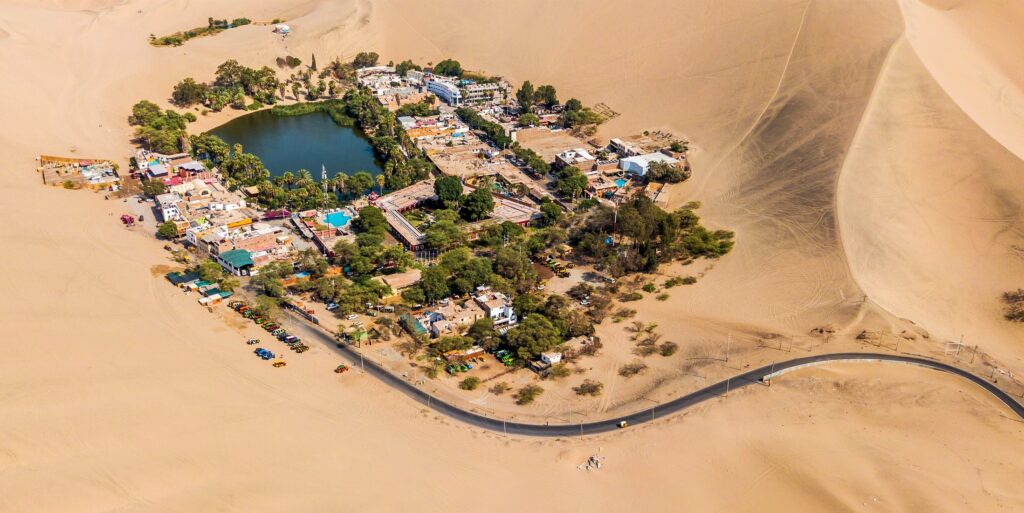
Down the road from Lima lies the Ica Valley and the town of the same name. Ica is right on the border of the Atacama Desert, one of the driest deserts in the world and one would think there wouldn’t be much life there…yet there is! Ica is famous for its wineries, which is surprising amidst the sand dunes, as well as Pisco, a Peruvia liquor. A few kilometers outside of town is the Huacachina oasis which is a nice, picturesque place to spend a little time. You can also use Ica as a jumping-off point to explore isla Ballestas and the Paracas National Reserve to the northwest or the Nazca lines about two hours south..
Lima
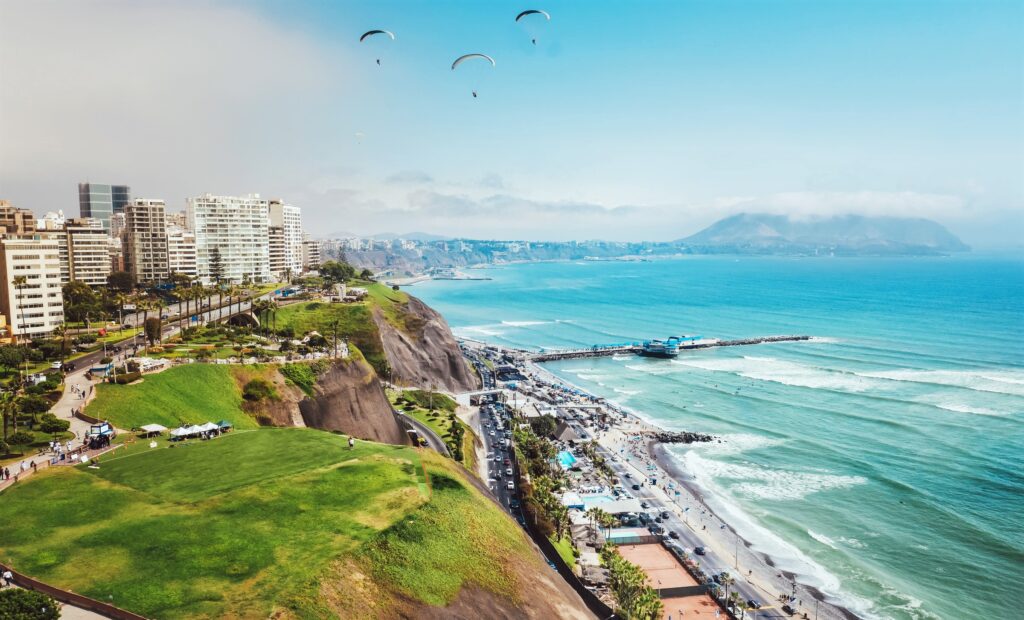
The Spanish called Lima the City of Kings and honestly, it’s pretty easy to see its grandeur, from its position atop seaside cliffs to its colonial architecture, not to mention its sheer size. The nice thing about Lima is that it can be visited inexpensively very easily since several main attractions are public spaces like the Plaza de Armas and Malecón are just so gorgeous. Be sure to head to the MIraflores neighborhood for the food and nightlife, the ocean views, and to see the Huaca Pucllana archeological site. Speaking of food, there’s a lot of incredible food to be had in Lima–be sure to get some ceviche if you don’t mind raw fish!
Must see places around the World by continent: Africa | Antarctica | Asia | Australia/Oceania | Europe | North America | South America

